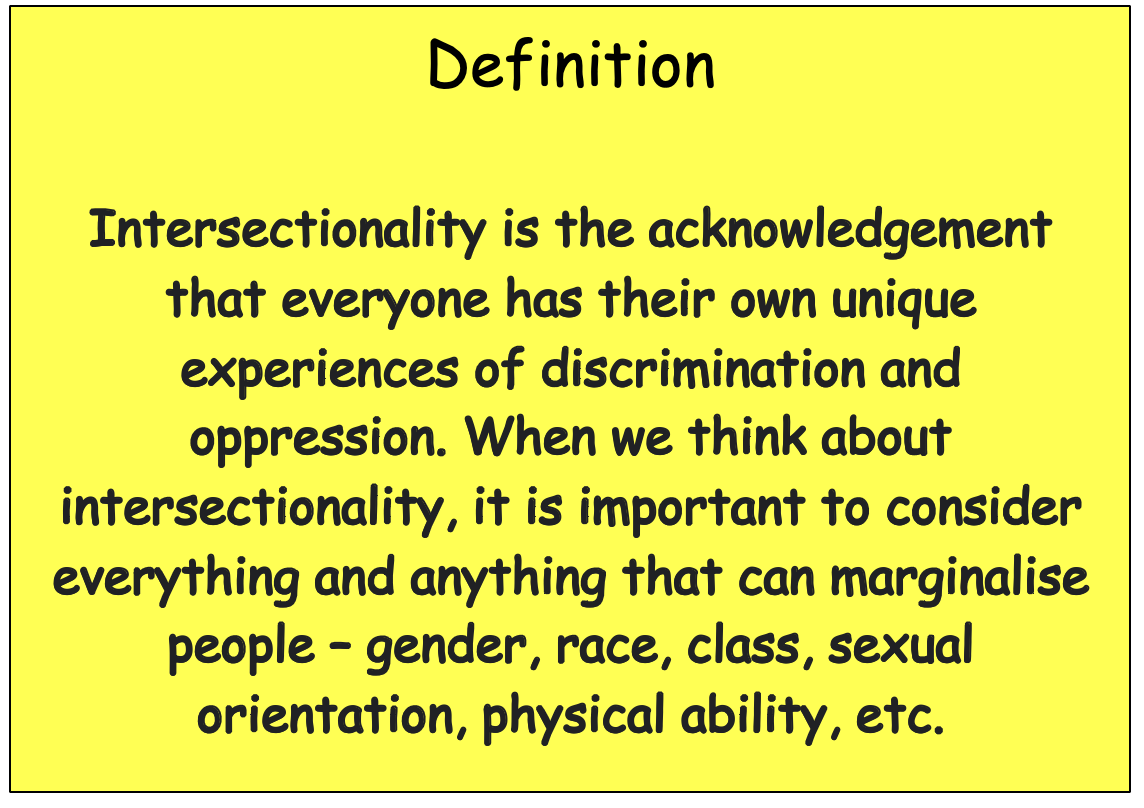Social Justice Symposium: Intersectionality in Literature
When talking about social justice and exploring literature, intersectionality seemed like a powerful topic to explore to help the students start to unpack the complex connections and levels of oppression that different people experience.
It is a BIG concept, that can be explored in many ways. I chose to have the kids start to find the patterns through mapping out the literature they had been reading in class. We also are making an intersectionality board that includes descriptors like student, teacher, loves reading, plays video games, team sports for the class to add their own line on. This will allow us to see our connections in a different way—find our similarities and celebrate our differences.
Introducing Intersectionality (Front-loading with Literature)
I knew I wanted to complete this lesson later in the week, so I chose texts to read the class very purposeful earlier in the week.
Text 1: One Plastic Bag
This is a picture book based on a the true story of a group of women in Gambia. I had the students complete a windows/mirrors activity while the book was read. The kids also discussed which social justice bins this book could have been in.
The book has powerful images in it and many connections to our social justice unit. In terms of the intersectionality chart the class looked at later in the week, this story could be connected to poverty, eco justice, women’s social justice (at the very least).
Text 2: Red Dress Day (May 5th) Information
May 5th is a national day of awareness in Canada for Murdered and Missing Indigenous Women and Girls (MMIWG). This day was inspired by the REDress Project, which displays empty red dresses to symbolize the lost and missing indigenous women and girls (so much more—please watch the video below and visit the website by artist Jaime Black).
If you would like to read the final report of the National Inquiry into Murdered and Missing Indigenous Women and Girls you can download it HERE.
To say this is an intense subject matter is putting it mildly. I found a one-page document about the topic with facts to use with my class. There are so many newspaper articles and videos that can be shown. Many of the marches this year were started as schools, which were reported on and could now be used to help explore the topic. I had my kids find windows/mirrors in the nonfiction document I provided and we zoomed into text features to help us understand the text. After they had read the document, the kids cut a small red dress and wrote on it what they can do based not he suggestions in the article and their learning.
The intersectionality in this topic included women’s social justice and experiences of discrimination/racism. The topic is obviously MUCH more complicated than this, but these were the connections my kids started to see.
Exploration of Texts
I had already front loaded the kids by introducing the picture book (One Plastic Bag) and the nonfiction text (MMIWG), which helped me provide a clear example. We had the students sit with their current reading bin group and talked about the definition of intersectionality. We modelled drawing lines for the two previous texts of the week, and encouraged the kids to see the connections. We talked about layers of oppression vs. privilege and how exploring intersectionality can help us see these.
We then challenged the students to work in pairs to try to sketch the intersectionality of many of the books in their current bin…and then move beyond to other bins and books they had read.
I like to encourage student voice and feedback—this is even more important when exploring hard topics. The students realized that I missed an important intersectionality. I had included ‘experienced racism’, but was missing ‘experienced discrimination’ in general. Every group added it. Since this is the first time that I had run this lesson, so feedback like this helps me refine my practice.
The students were highly engaged and the started to notice patterns, which was exciting. They saw the layers of oppression and often noticed that racism was present with most other pieces.
You can download a copy of my refined sheet HERE.
Class Connections: Social Justice Symposium Display
We are going to make an intersectionality chart for our class with ideas suggested by our class that are more superficial (travelled to Europe, wears glasses, student, teacher etc.). This will demonstrate what intersectionality is for our symposium. We will also display a few of the charts made by student groups so that we can talk about the layers of oppression that are explored in different texts.
Final Thoughts
Intersectionality feels like a very complex topic to explore with kids. Breaking the pieces into parts and helping kids see patterns is very powerful. It can make a complex topic visual and easier to understand.
This lesson has encourage me to continue to explore how to break complex topics down in hands-on ways to help students deepen their own understanding.



